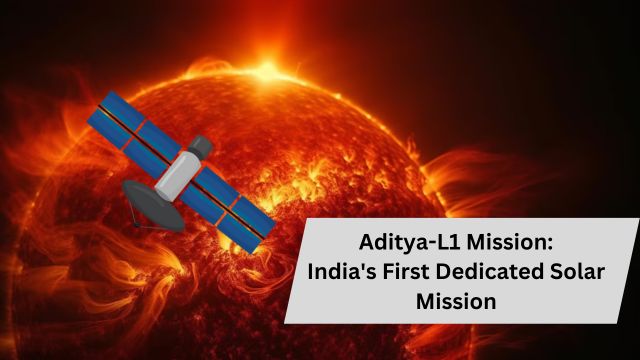Aditya-L1 is India's first mission that is solar-dedicated. It was designed and developed by the Indian Space Research Organization (ISRO). It is a coronagraphy spacecraft to study the solar atmosphere, which will orbit at a distance of about 1.5 million km from the Earth in a coronal orbit around the L1 Lagrange point between the Earth and the Sun.
Aditya-L1 was launched on September 2, 2023, by a PSLV-C57 rocket from the Satish Dhawan Space Centre in Sriharikota, India. It is expected to begin its scientific operations in October 2023.
This spacecraft carries seven scientific payloads, all of which were developed in India:
1. Visible Emission Line Coronagraph (VELC): It studies the dynamics of the solar corona and its magnetic field.
2. Solar Ultraviolet Imaging Telescope (SUIT): It studies the dynamics and structure of the solar chromosphere and corona.
3. Imaging X-ray Spectrometer (IXS): It studies the solar plasma and its dynamics.
4. Plasma Energy Detector (PED): It studies the energy and structure of solar plasma.
5. Particle and Electron Telescope (PET): It studies the energy and structure of solar energetic particles.
6. Magnetometer (MAG): It studies the solar magnetic field.
7. Visible Emission Line Coronagraph (VELC): It studies the dynamics of the solar corona and its magnetic field.
Main science objectives are:
1. It studies the dynamics of the Sun's chromosphere and corona.
2. It studies the physics of chromospheric and coronal heating, partially ionized plasma, coronal mass ejections (CMEs) and their origins, coronal magnetic fields and heat transfer mechanisms, and flare exchange.
3. Additionally, it observes the physical particle environment around its position.
4. To determine the sequence of processes in several layers beneath the corona that cause solar eruptions.
5. Studies the origin, composition, and dynamics of space weather and the solar wind.
The Aditya-L1 mission is expected to contribute significantly to our understanding of the Sun and its effects on Earth. Data collected by the spacecraft will help us better understand the physics of the solar atmosphere, the origin and propagation of solar eruptions, and the impact of solar activity on space weather.
Benefits of the Aditya-L1 mission
The mission is expected to have several benefits, including:
- With this, we can better understand the Sun and its effects on the Earth.
- This could help in better forecasting space weather.
- This will help in the development of new technologies for space exploration and solar energy.
- It will become an inspiration for future generations of scientists and engineers.
The Aditya-L1 mission is a major milestone in India's space program and a significant contribution to global solar research. This may provide new insights about the Sun and its effects on the Earth, which will benefit society in many ways.
FAQs
1. What is the full name of the Aditya-L1 mission?
Aditya-L1 is the first Indian mission dedicated to the comprehensive study of the Sun.
2. Will Aditya-L1 land on the sun?
No, Aditya-L1 will not land on the sun. It will circle the Sun at a distance of around 1.5 million km.
3. How many countries have sent satellites to the sun?
Only two countries, the United States and the Soviet Union, have sent satellites to the sun.
4. What is the mission of the Aditya solar probe?
The mission of the Aditya solar probe is to study the Sun's corona and chromosphere.
5. What is the cost of aditya-L1 mission?
The cost of the Aditya-L1 mission is about 1.5 billion Indian rupees.



No comments:
Post a Comment